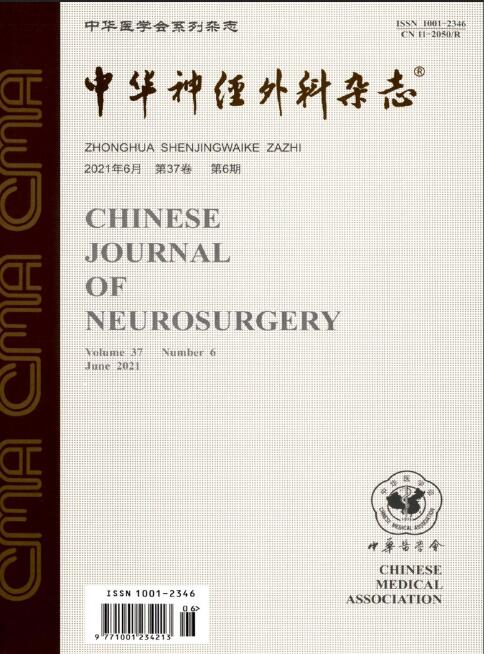Application of 3D printed individualized guide plate in intracranial lesion biopsy
Q4 Medicine
引用次数: 0
Abstract
Objective To explore the feasibility of 3D printing individualized guide plate in the localization and biopsy of intracranial lesion. Methods A retrospective analysis was conducted on 8 patients with intracranial lesions who underwent puncture and biopsy at Department of Neurosurgery, General Hospital of Ningxia Medical University from November 2016 to December 2018. Using preoperative brain CT and MRI enhancement images as the original data, Mimics 17.0 software was used to reconstruct the 3D image, plan the needle position, design the puncture hole, and calculate the puncture depth. Personalized puncture guide plate was printed. During the operation, puncture needle was inserted into the fitting puncture hole, the puncture depth was controlled, biopsy specimen was taken for histopathological examination, and postoperative brain CT was used to evaluate the success of puncture. Results During the operation, the guide plates of the 8 patients were well fitted with the anatomical structure of the puncture site, the orientation and depth of the needle entry were consistent with preoperative design scheme, all puncture operations were completed once and the target tissues were successfully removed, and the average operation duration was 72.0±10.5 min. Brain CT was reexamined 6 hours after operation and no bleeding was found in the puncture trajectory and puncture entry points of 8 patients. None of the patients had intracranial infection or new neurological function deficit related to puncture. Conclusion The 3D printed individualized guide plate could simplify the operation procedure of intracranial lesion puncture biopsy and help achieve the purpose of biopsy accurately, safely and efficiently. Key words: Brain diseases; Biopsy; Punctures; 3D printing; Guider3D打印个体化导板在颅内病变活检中的应用
目的探讨3D打印个体化导板在颅内病变定位活检中的可行性。方法回顾性分析2016年11月至2018年12月在宁夏医科大学总医院神经外科行颅内病变穿刺活检的8例患者。以术前脑CT和MRI增强图像为原始数据,利用Mimics 17.0软件重建三维图像,规划针位,设计穿刺孔,计算穿刺深度。打印个性化穿刺引导板。术中将穿刺针插入合适的穿刺孔内,控制穿刺深度,取活检标本进行组织病理学检查,术后用脑CT评估穿刺成功与否。结果8例患者术中引导板与穿刺部位解剖结构贴合良好,入针方向和深度与术前设计方案一致,穿刺操作一次完成,成功取出靶组织;平均手术时间为72.0±10.5 min。术后6 h复查颅脑CT, 8例患者穿刺轨迹及穿刺切入点均未见出血。所有患者均无颅内感染或与穿刺相关的新神经功能缺损。结论3D打印个体化导板可简化颅内病变穿刺活检的操作流程,有助于实现准确、安全、高效的活检目的。关键词:脑部疾病;活组织检查;刺穿;3 d打印;向导
本文章由计算机程序翻译,如有差异,请以英文原文为准。
求助全文
约1分钟内获得全文
求助全文
来源期刊

中华神经外科杂志
Medicine-Surgery
CiteScore
0.10
自引率
0.00%
发文量
10706
期刊介绍:
Chinese Journal of Neurosurgery is one of the series of journals organized by the Chinese Medical Association under the supervision of the China Association for Science and Technology. The journal is aimed at neurosurgeons and related researchers, and reports on the leading scientific research results and clinical experience in the field of neurosurgery, as well as the basic theoretical research closely related to neurosurgery.Chinese Journal of Neurosurgery has been included in many famous domestic search organizations, such as China Knowledge Resources Database, China Biomedical Journal Citation Database, Chinese Biomedical Journal Literature Database, China Science Citation Database, China Biomedical Literature Database, China Science and Technology Paper Citation Statistical Analysis Database, and China Science and Technology Journal Full Text Database, Wanfang Data Database of Medical Journals, etc.
 求助内容:
求助内容: 应助结果提醒方式:
应助结果提醒方式:


